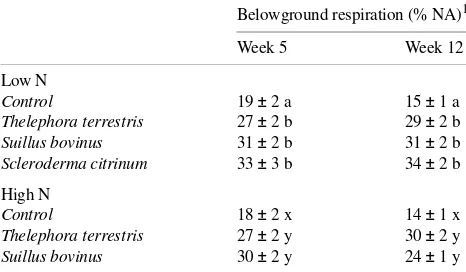Directory UMM :Data Elmu:jurnal:T:Tree Physiology:Vol16.1996:
Teks penuh
Gambar



Dokumen terkait
Growth for a hypothetical Scots pine tree stem at 1.3 m from the ground was simulated over time and the mechanical prop- erties for each individual ring estimated using the
(a) Relationships between annual stem growth respiration rate and sapwood relative growth rate and (b) between annual stem maintenance respiration rates and sapwood relative
Mean ( ± SE) concentra- tions of microelements (Mn, Fe and B), toxic elements Al, F and Ca/Al molar ratio along the length (five sections) of current-year needles of Scots pine trees
Comparison of stem surface area (A), sapwood volume (V) and nitrogen content of living stem biomass (N) as the basis for expressing stem maintenance respiration rates for balsam
We determined the effects of soil temperature and N avail- ability on fine-root (< 2.0 mm diameter) respiration rates by examining patterns of respiration in four northern
Summary To determine the effects of shade on biomass, carbon allocation patterns and photosynthetic response, seed- lings of loblolly pine (Pinus taeda L.), white pine (Pinus
When more nutrients were made available through fertilization, slash pine trees increased carbon gain almost exclu- sively by expanded leaf area rather than by increased rates of
We present experimental results on the radiation environment of the Scots pine canopy and using these data, the differences between various spatial and temporal averaging procedures